Transforming shady corners into vibrant outdoor rooms begins with a clear understanding of site-specific light patterns, from light or dappled shade to deep and seasonal shadows. Layered planting schemes, foliage contrast, and well-placed hardscape features—including paths, seating, and lighting—elevate low-light areas into dynamic garden experiences. Embracing artistic principles such as emphasis, balance, rhythm, and texture helps create cohesive compositions that resonate across woodland, tropical, Japanese, and Islamic-inspired themes. Container strategies and groundcover replacements optimize space and reduce maintenance while supporting biodiversity and ecological benefits through shade-loving perennials. The following twenty design ideas combine expert recommendations, plant palettes, and thematic inspirations to guide gardeners in crafting lush, captivating shade gardens in any climate.
1. Analyzing Shade Patterns
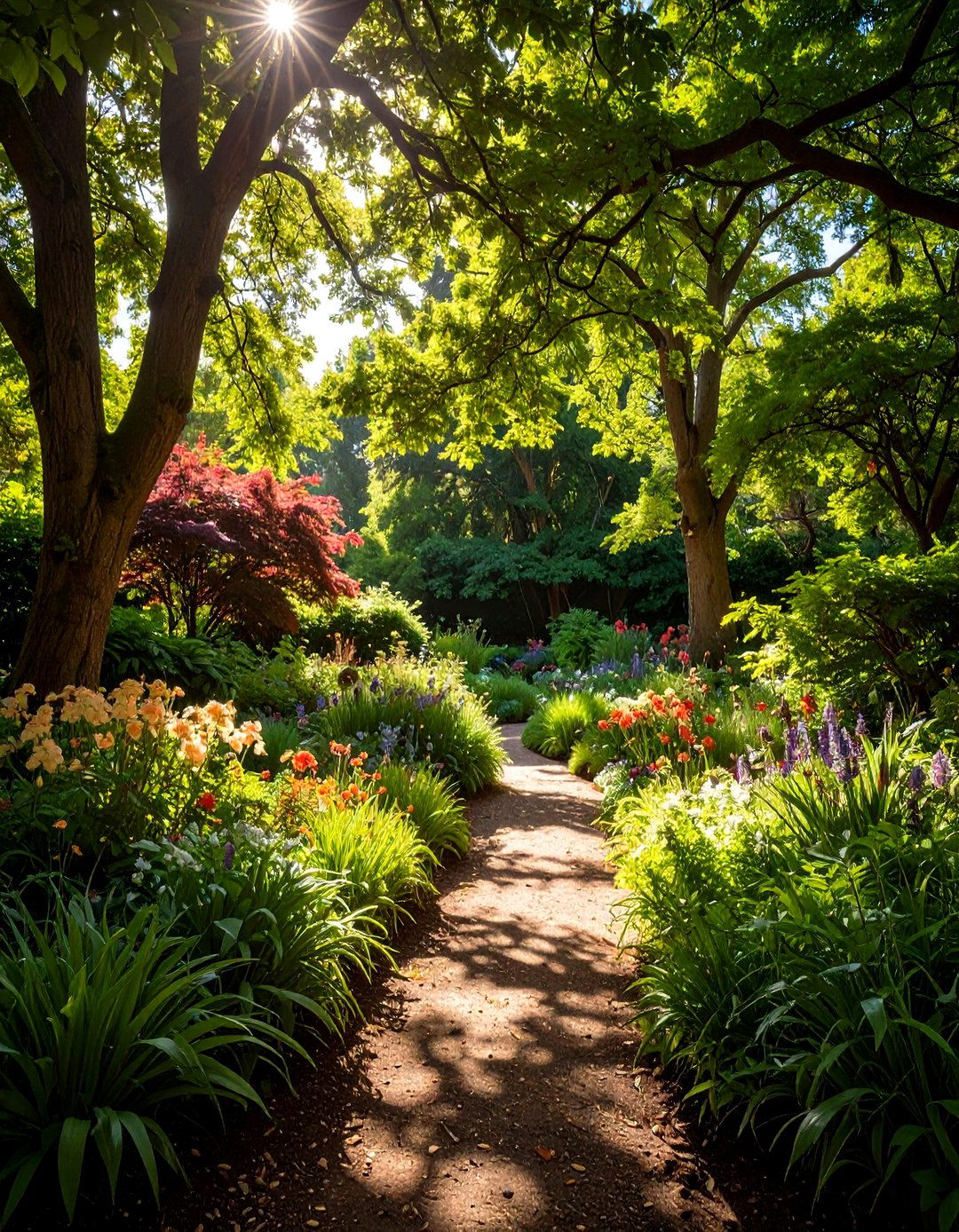
Successful shade garden design begins with understanding the types of shade in your outdoor space, including light or dappled shade, full shade, and morning or afternoon sun patterns. Light or dappled shade occurs when sunlight filters through tree canopies and supports many tolerant perennials, while full shade offers minimal direct light and restricts plant choices to the most shade-adapted species. Morning shade gardens with afternoon sun exposure can host partial shade plants, whereas afternoon shade areas benefit from morning sun-loving specimens adapted to cooler morning light. Observing your yard at different times and seasons helps map sun patterns and predict future shade changes due to tree growth or structural shadows. This site analysis informs plant selection, spatial planning, and design elements, ensuring each garden feature performs optimally under its specific light conditions.
2. Choosing the Right Plants for Your Shade Level
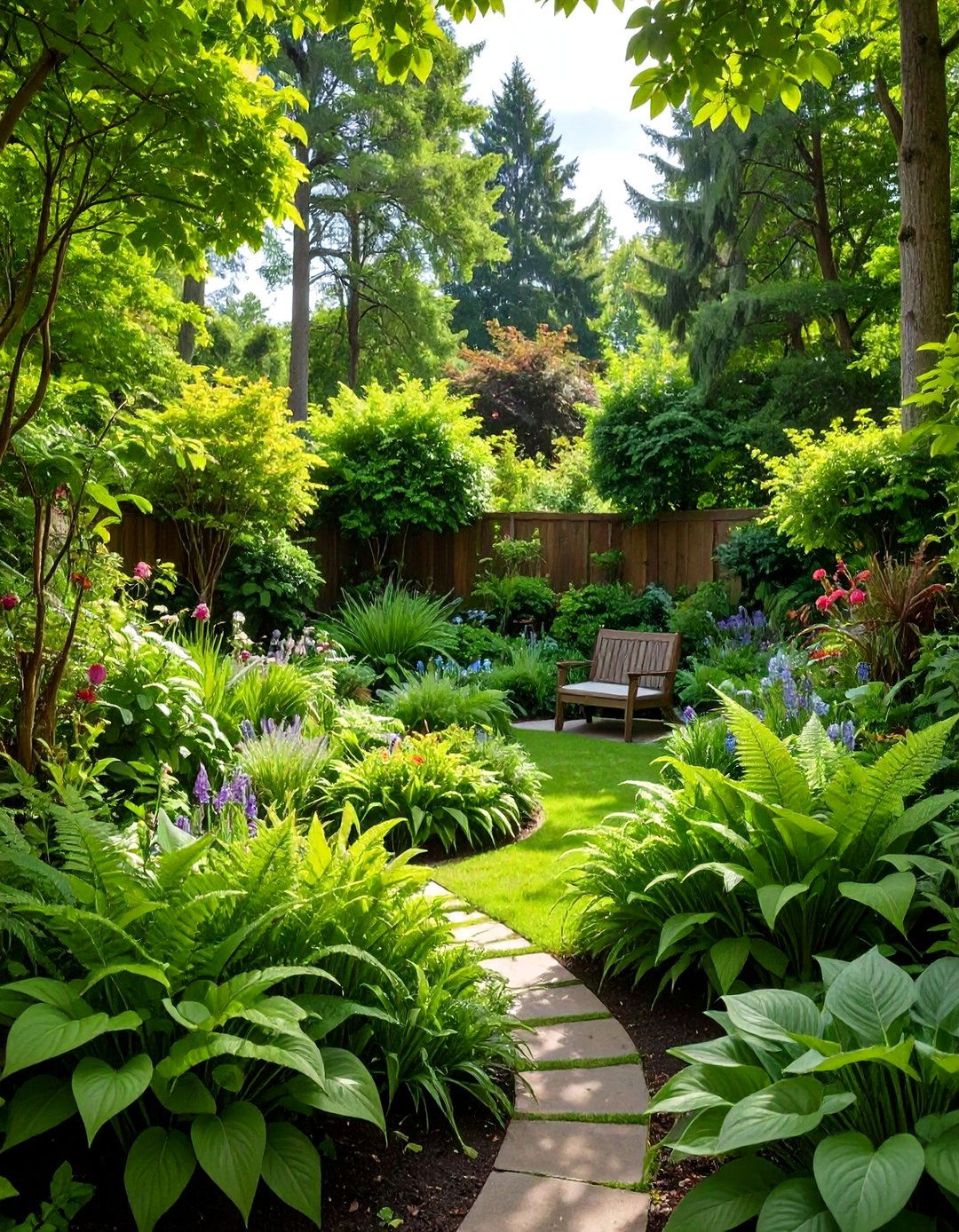
Selecting appropriate plants for your shade conditions is crucial; light-shade spots can accommodate spring bulbs and ephemerals, while deep shade requires tough species like ferns and hostas. GardenDesign recommends including ephemerals such as Trillium and Virginia bluebells to capitalize on early-season light under deciduous canopies before full leaf-out. For areas of full shade beneath mature trees, hardier options include bigroot geranium (Geranium macrorrhizum), Ajuga (bugleweed), and Epimedium (bishop’s hat) which tolerate dry shade and root competition. Proven Winners highlights impatiens, begonias, and hostas for shade gardens offering vibrant blooms and varied foliage textures from light to full shade conditions. By matching plant characteristics to shade levels, gardeners ensure robust growth and sustained interest, reducing maintenance and risk of plant failure.
3. Layered Plantings for Depth
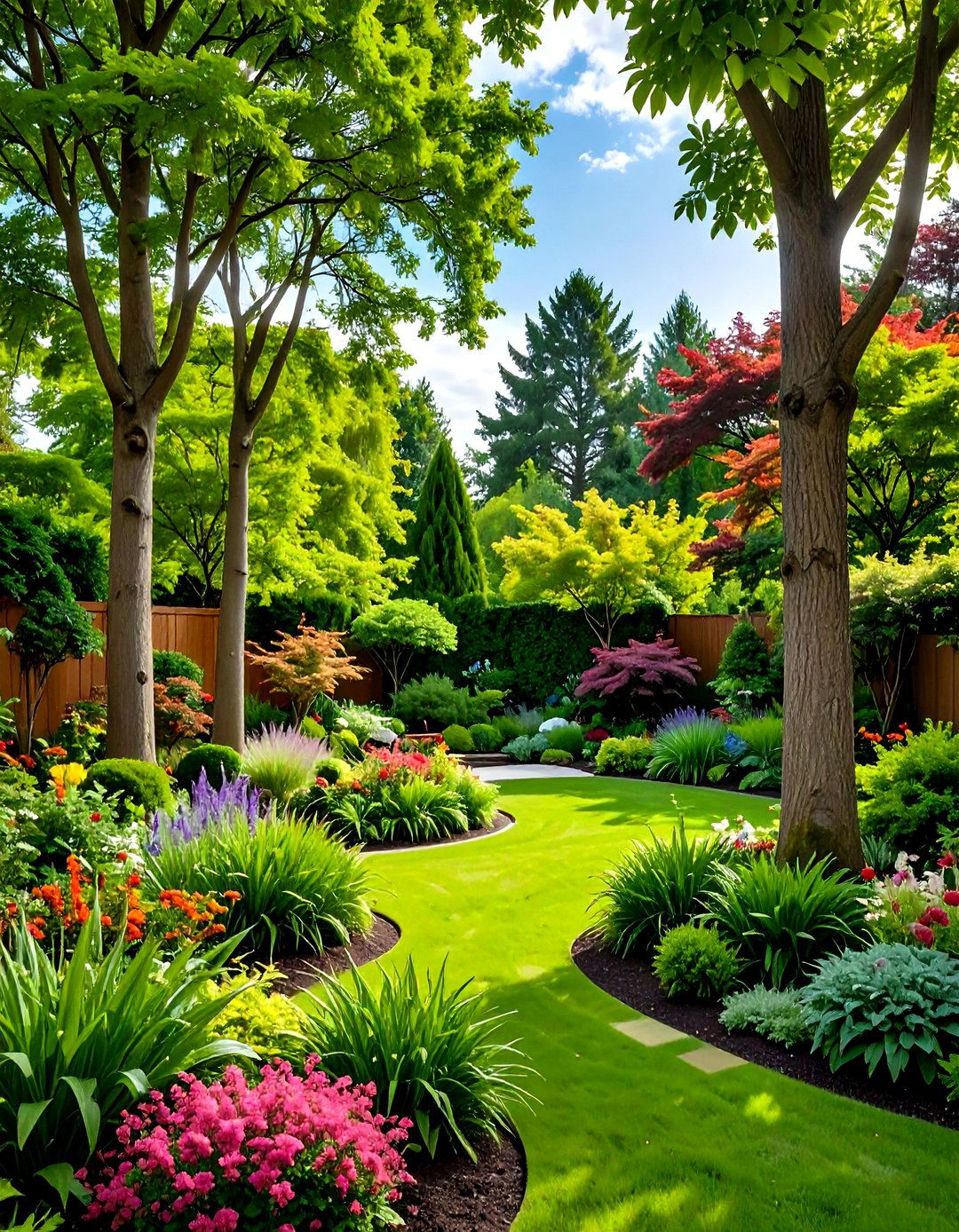
Layered planting techniques create depth by combining tall canopy specimens, mid-tier shrubs, and low groundcovers to mimic natural woodland strata in shaded gardens. GardenDesign recommends mixing plants with different heights, shapes, and textures to maintain visual interest and ensure an organic flow across the garden bed. Incorporating vertical elements like small trees or elevated planters enhances dimension, allowing trailing species to cascade over lower layers. Selecting complementary foliage varieties such as hostas, heucheras, and ferns emphasizes the layered effect and introduces contrasting leaf textures. This stratified composition not only enhances aesthetic appeal but also optimizes space use, maximizing plant density without overcrowding.
4. Contrasting Foliage for Brightness
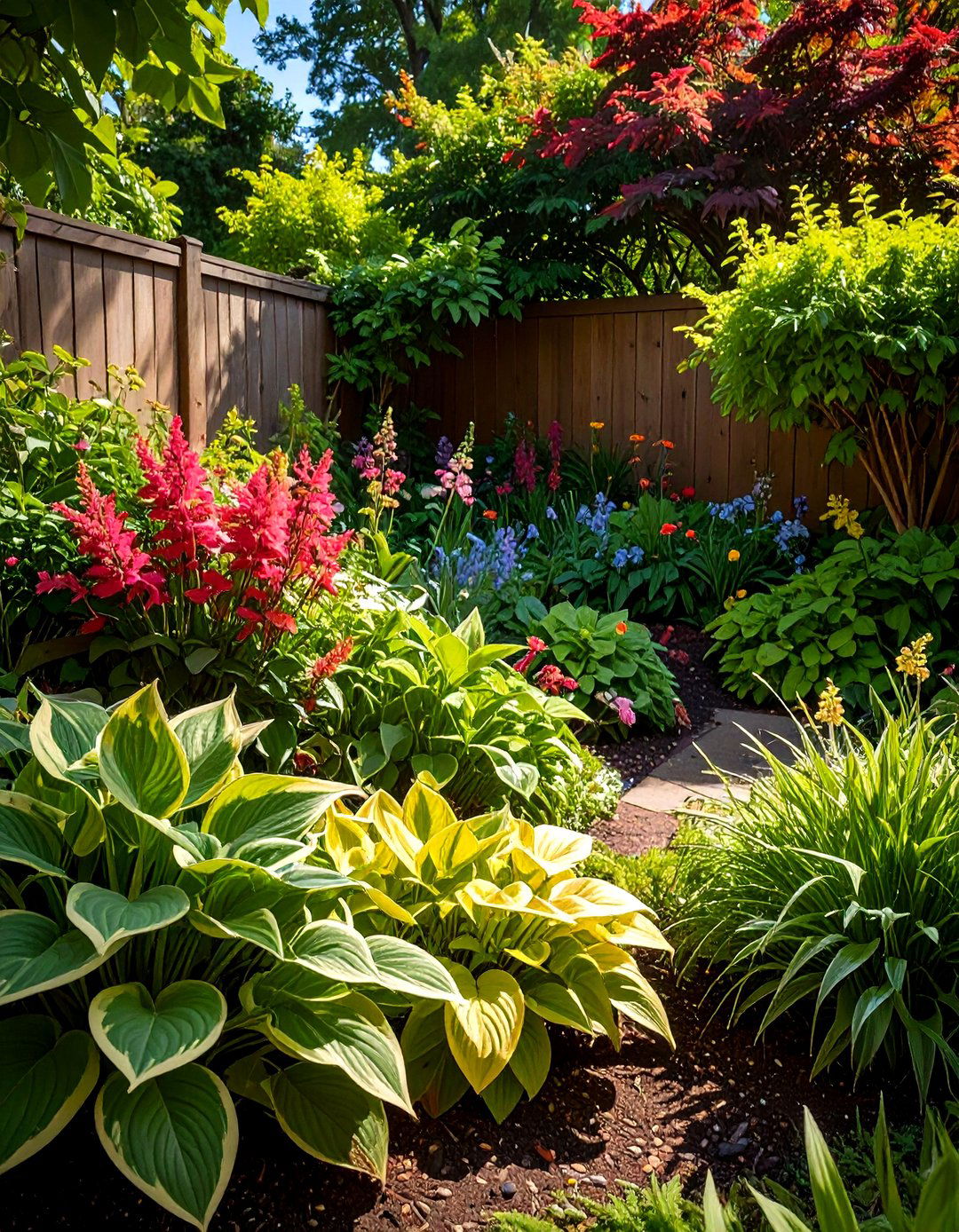
Utilizing foliage plants with chartreuse, gold, silver, or variegated leaves instantly brightens dark corners and reflects limited light in a shade garden. Variegated hostas, caladiums (taro lilies), and coral bells introduce shimmering leaf patterns that enliven low-light areas beneath tree canopies. Silver-leaved Lamium ‘Purple Dragon’ and dark-leaved Heuchera ‘Obsidian’ also help light up shady spots with their reflective foliage qualities. Integrating plants with light-colored blooms like white impatiens or toad lilies (Tricyrtis) further accentuates the luminous effect in dim settings. This play of color and light transforms gloomy corners into vibrant vignettes, enhancing perceived brightness and depth.
5. Vertical Interest with Vines
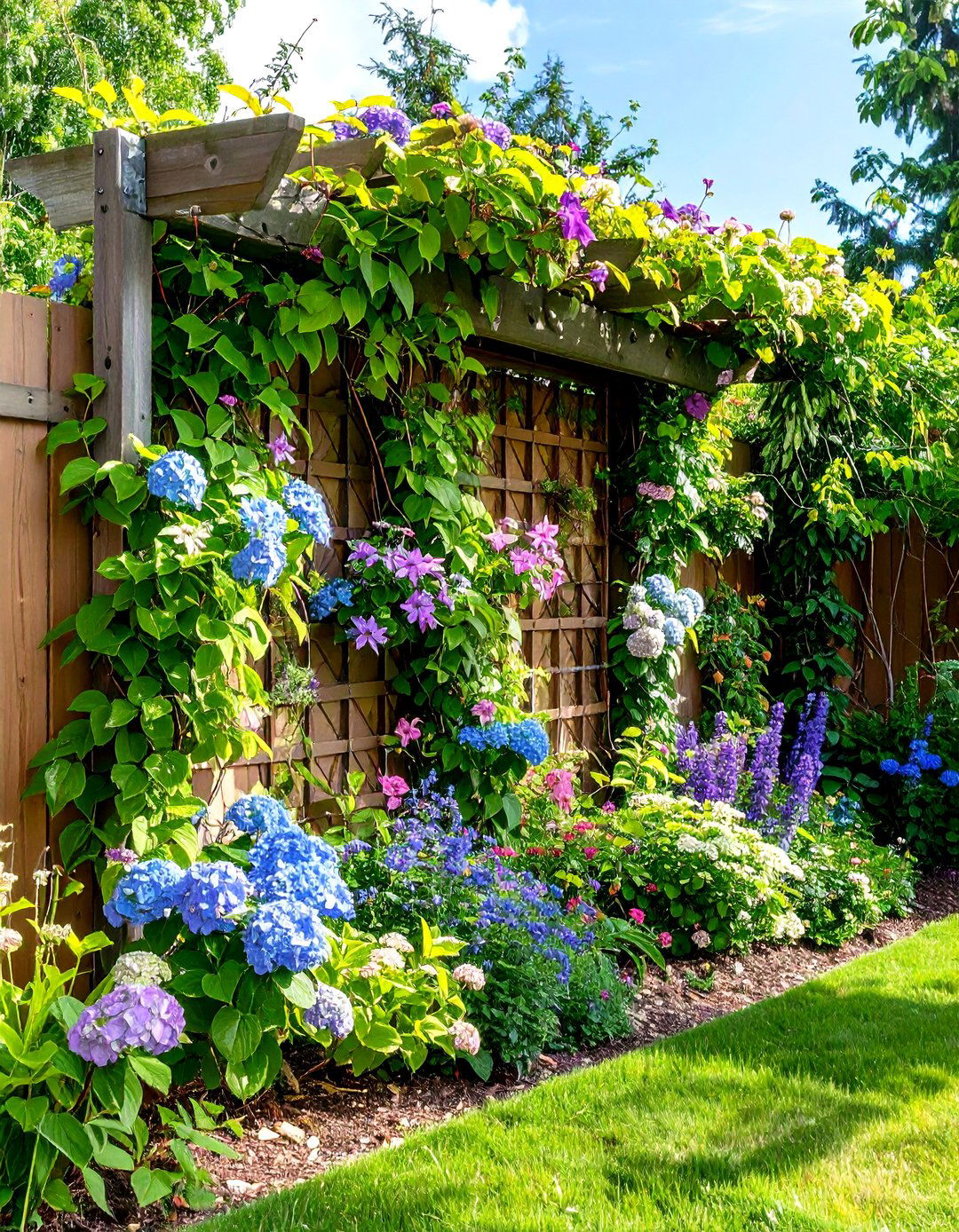
Incorporating vertical elements in shade gardens maximizes space and draws the eye upward, adding structure and drama beneath tree canopies. GardenDesign advises using shade-tolerant vines such as clematis, climbing hydrangea, or Virginia creeper to soften walls and screen dull fences. Trellises, arbors, and pergolas support these climbers, creating living green walls that enrich microclimates and introduce spatial layers. These vertical installations offer both functional screening and a lush aesthetic, ideal for concealing unsightly structures and adding historical charm to garden rooms. Elevating vines also creates shade gradients that benefit understory plantings and wildlife habitat.
6. Repetition for Cohesion
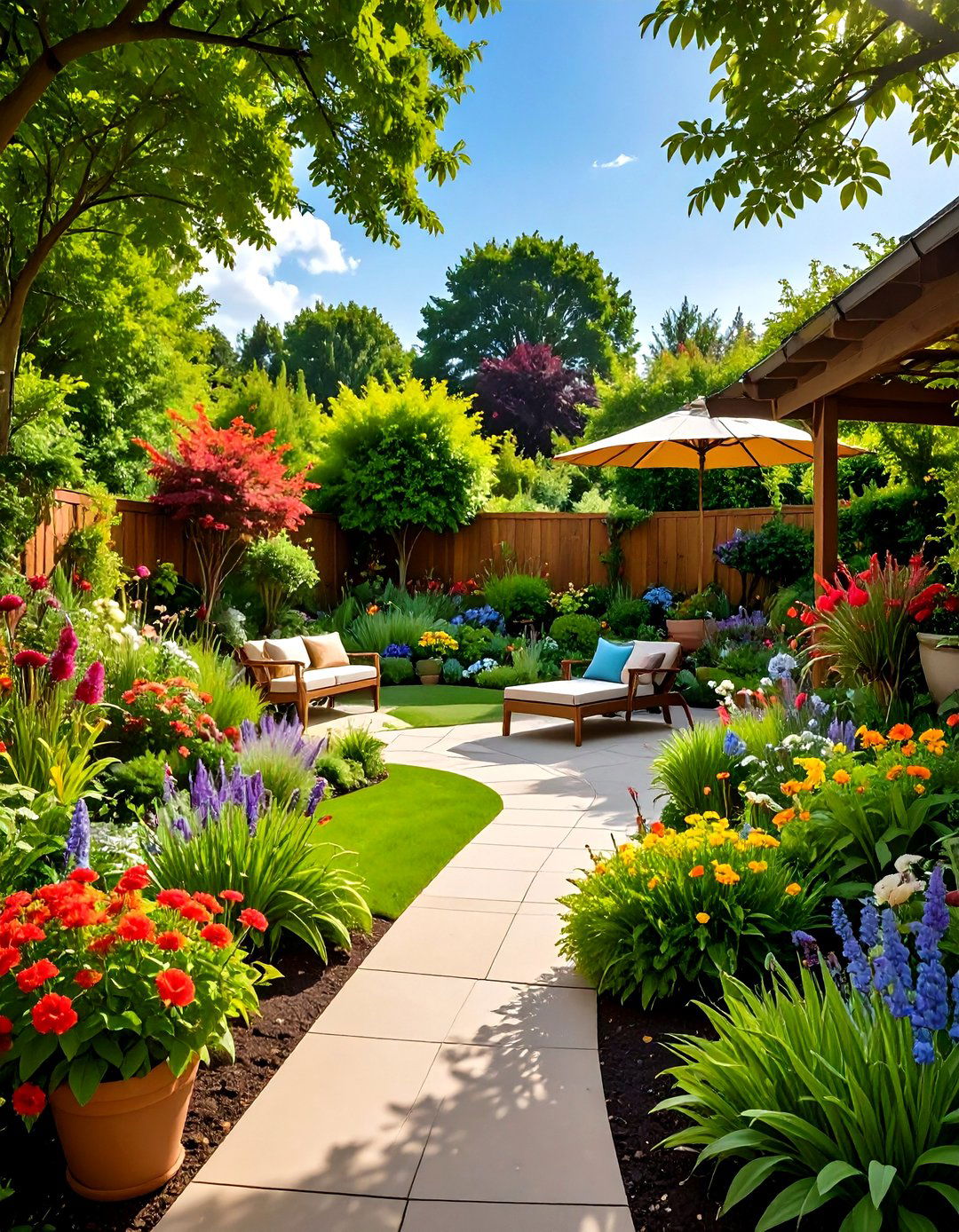
Repetition of plants, colors, and shapes fosters cohesion across a shade garden, guiding the viewer through the landscape with a harmonious rhythm. Swansons Nursery highlights the importance of establishing masses and repetition of individual plants, shapes, and colors to support focal points and unify the design. This technique also simplifies maintenance by standardizing care routines for repeat specimens, while reinforcing visual consistency. Maintaining consistent plant spacing and color accents ensures the garden feels intentional, balanced, and visually connected even around corners. By combining repetition with contrasting textures, shade gardens achieve both unity and interest, avoiding monotony in low-light environments.
7. Transitional Plant Schemes

Transitional plant schemes bridge sunny and shady zones, using species tolerant of both conditions to create seamless shifts in garden exposure. GardenDesign recommends transitional plants such as Japanese forest grass, Brunnera, and Heuchera for soft edging where sun and shade meet. These adaptable perennials establish a graded palette, easing abrupt shifts and fostering a continuous flow of foliage hues. Utilizing transitional plants enhances microclimates, buffering extremes of light, moisture, and temperature for neighboring plant communities. This approach ensures design continuity and plant health across varied shade gradients, uniting disparate garden areas under a cohesive theme.
8. Hardscape Structures to Define Space
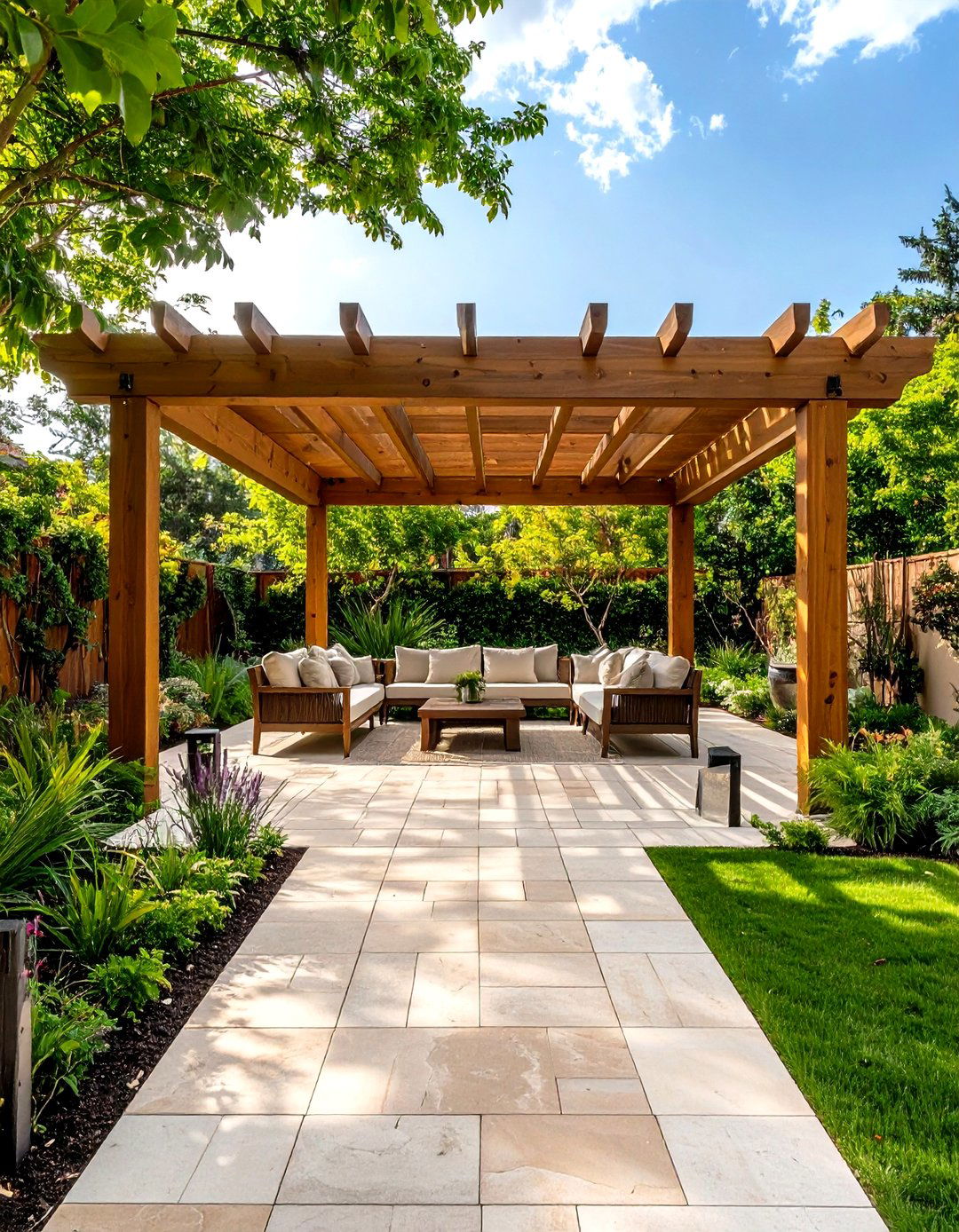
Integrating hardscape elements such as pathways, patios, seating areas, and structures like arbors or pergolas provides essential structure in shade gardens. GardenDesign highlights the use of stone, gravel, or permeable pavers to contrast soft planting and define intimate outdoor rooms. Hardscaping also offers an alternative to turf replacement in shade, as traditional lawns often struggle in low light and require high maintenance. Swansons recommends listing features like pathways, patios, seating areas, and pergolas during the planning phase to complement plantings and guide installation. Carefully placed hardscape materials in complementary tones maintain visual harmony while providing functional durability in moist, shaded environments.
9. Groundcover Replacements for Lawns
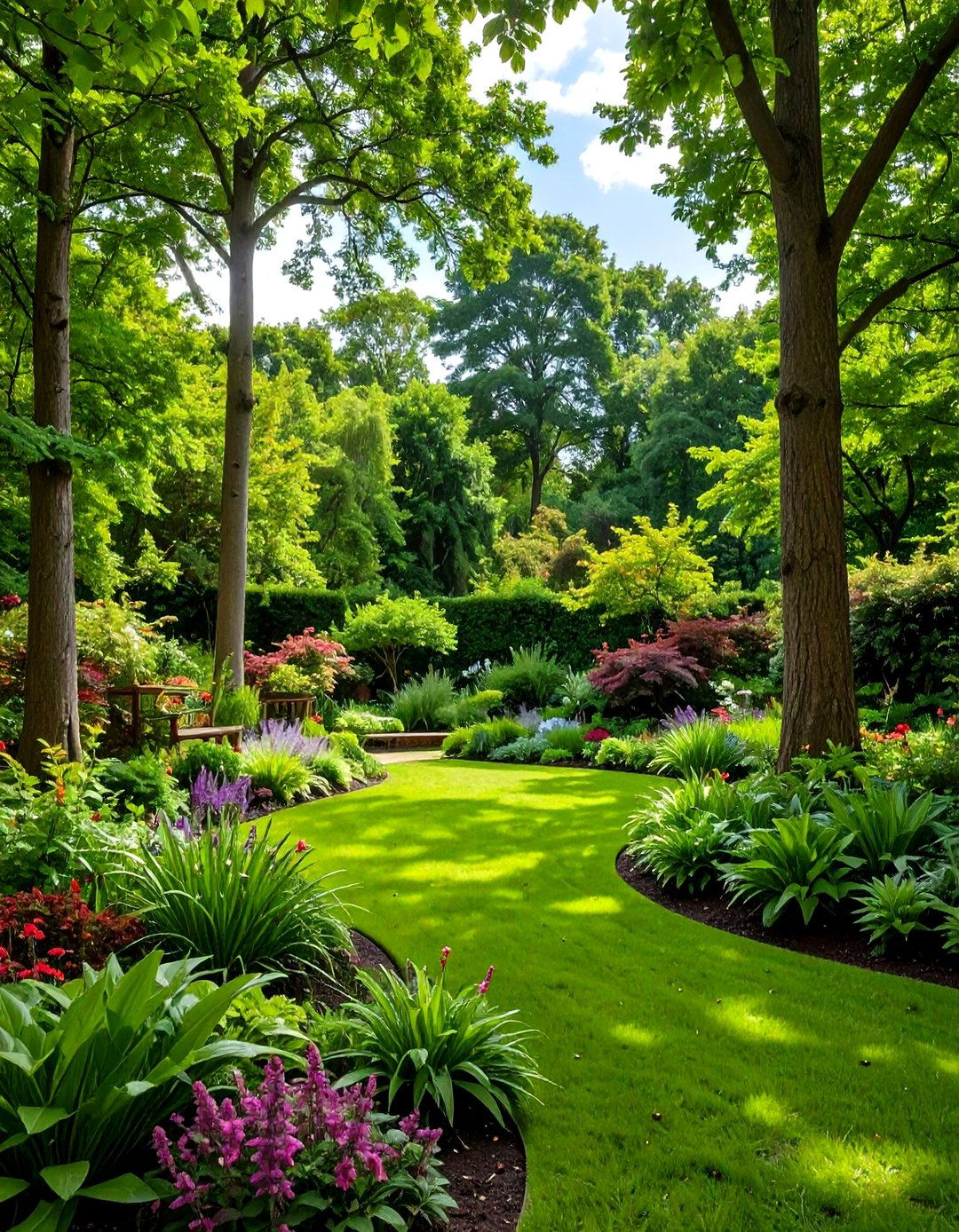
Traditional turfgrass often fails in shade, leading gardeners to replace lawns with low-growing groundcovers or mulched beds that thrive without direct sun. GardenDesign suggests removing turf and massing shade-tolerant groundcovers, while White Flower Farm demonstrates effective use of Lamium ‘Purple Dragon’, Ajuga ‘Black Scallop’, and Heuchera ‘Obsidian’ to cover bare soil. These hardy perennials suppress weeds, retain moisture, and create a uniform canvas for accent planting in low-light conditions. Intermixing seasonal bulbs within groundcover mats injects pops of spring color without disturbing the stable cover beneath. This groundcover matrix also supports ecological functions, helping reduce pollution and facilitating rainwater drainage in shaded urban gardens.
10. Illuminating the Shade: Lighting Tips
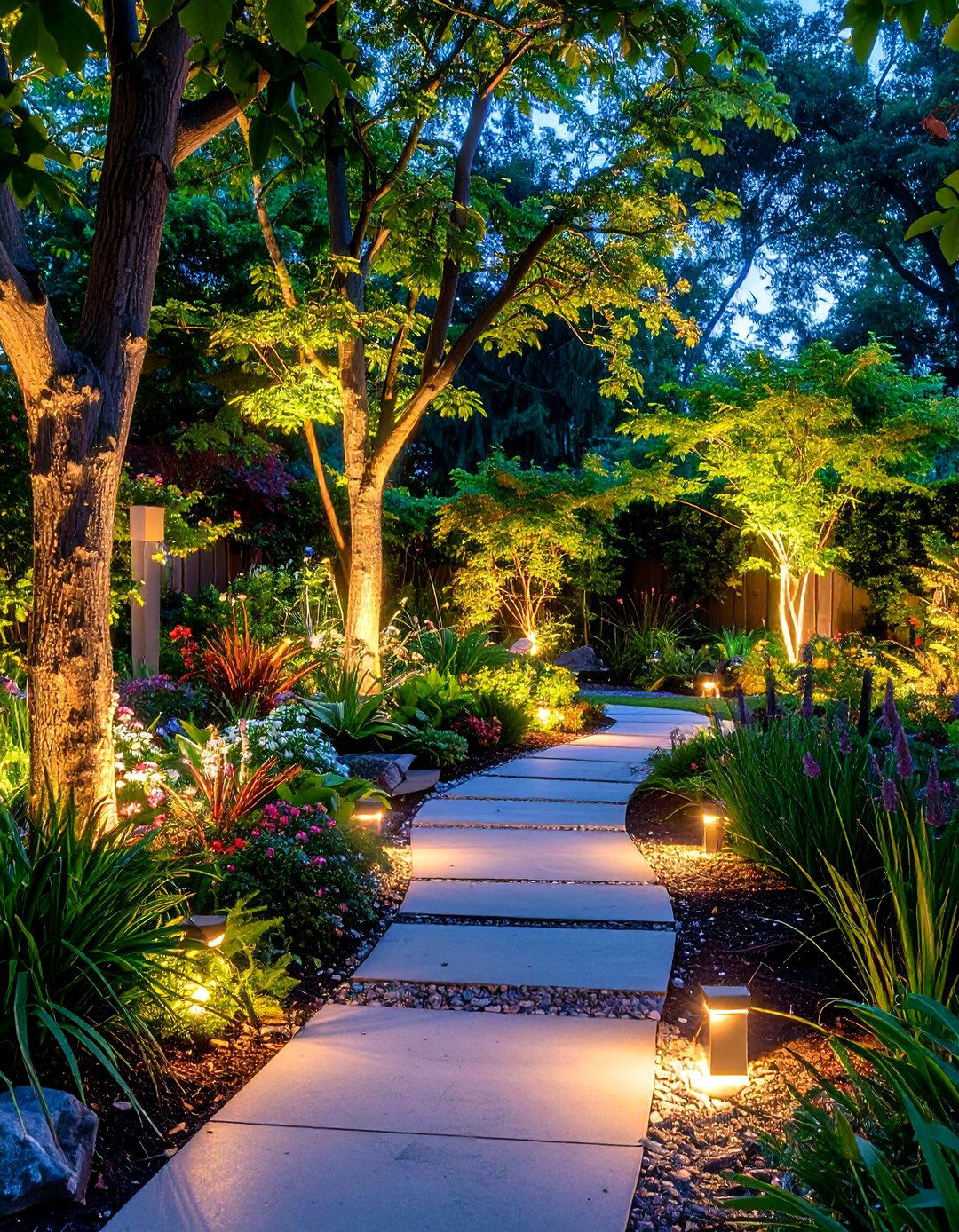
Integrating strategic lighting in shade gardens extends usability after dusk and highlights key features under dense canopy cover. Expert lighting techniques include uplighting for accentuating tree trunks, backlighting to create shadow silhouettes, and downlighting from branches to mimic soft moonlight. Pathway lights and spotlights guide movement and draw attention to specimen plantings, while grazing washes can emphasize wall textures and vertical elements. Solar-powered fixtures offer sustainable options, reducing wiring needs and complementing moisture-prone shaded environments without compromising design integrity. Incorporating lighting layers enhances ambiance, safety, and aesthetic drama, transforming shaded passages into enchanting nocturnal gardens.
11. Seasonal Interest with Spring Ephemerals
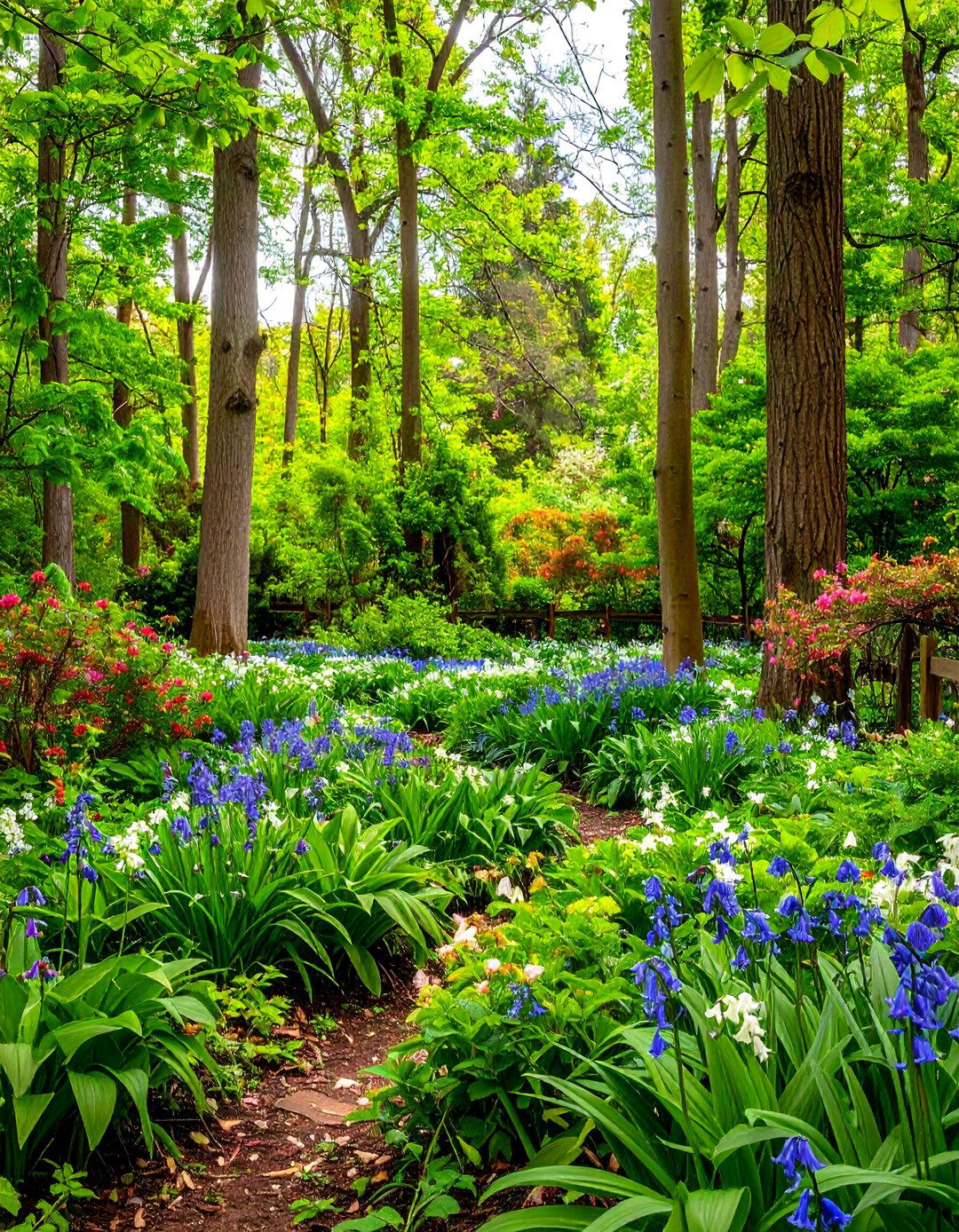
Spring ephemerals provide fleeting bursts of color and form in shade gardens before tree canopies fully leaf out. GardenDesign highlights ephemerals like Trillium, Virginia bluebells (Mertensia virginica), and spring starflower (Ipheion ‘Wisley Blue’) for early-season impact. These bulbs and small perennials capitalize on higher light levels in early spring, retreating underground once shade increases to conserve energy. Planting ephemerals in drifts creates naturalistic displays reminiscent of woodland meadows and sets the stage for summer shade plantings. Combining ephemeral displays with evergreen accents ensures continuous visual interest as spring colors fade into lush, leafy summer textures.
12. Artistic Design Principles: Emphasis, Balance, Rhythm, Texture
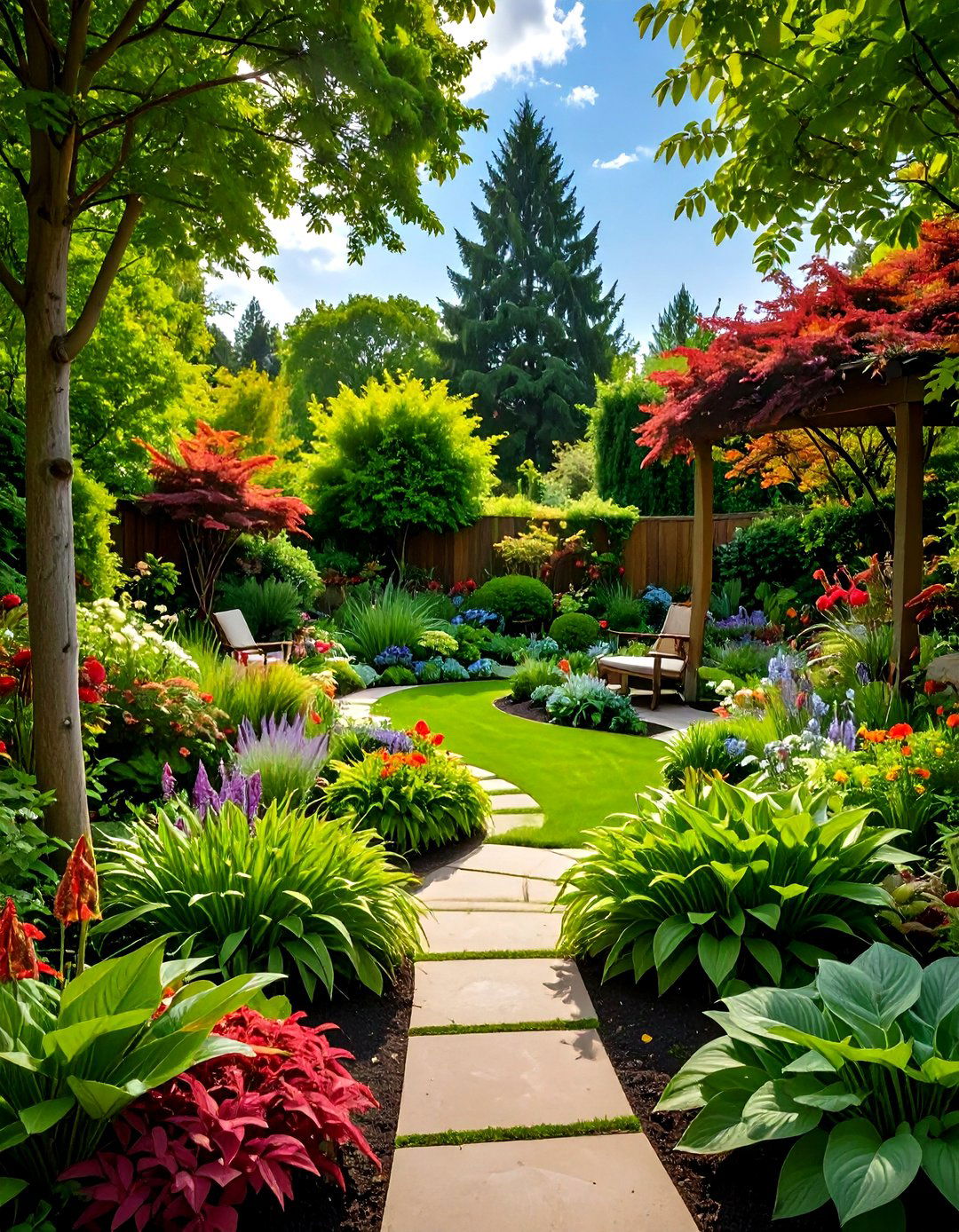
Applying artistic design principles in shade gardens—emphasis, balance, rhythm, and texture—elevates outdoor spaces into cohesive living compositions. Emphasis creates focal points with standout specimens like a sculptural hosta or a brightly colored heucherella to capture attention. Balance distributes visual weight evenly, pairing large-leaved plants with more delicate species to prevent dominance by any one element. Rhythm emerges through repetition and progression of plant heights or colors, guiding the viewer’s eye through the garden sequence. Texture variation—mixing smooth lamium foliage with the fine blades of Japanese forest grass—adds depth and invites tactile exploration.
13. Incorporating Focal Points and View Angles
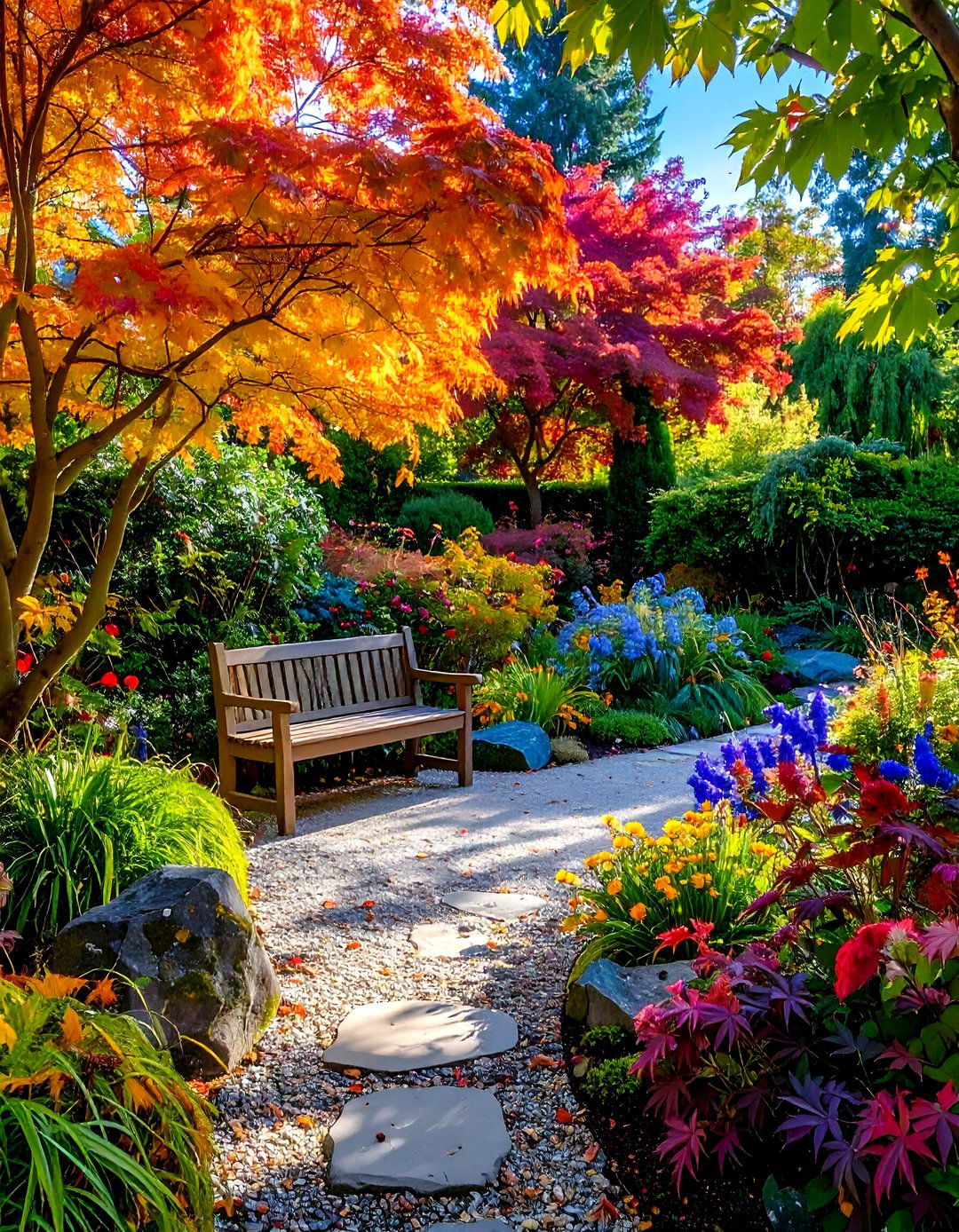
Strategically placing focal points and considering view angles ensures every vista in a shade garden offers a compelling scene. Swansons Nursery advises identifying primary sightlines from seating areas or entry points to orient pathways and highlight feature plants. Features like a specimen Japanese maple, ornamental bench, or sculptural container serve as anchors amid lush shade plantings. Positioning these elements against contrasting backdrops, such as dark-leaved heucheras or evergreen shrubs, increases their visual impact. Shifting perspective by walking along a meandering path or seating under a pergola reveals new focal moments, keeping the shade garden dynamic.
14. Cool Color Schemes and Water Features for Illusion of Coolness
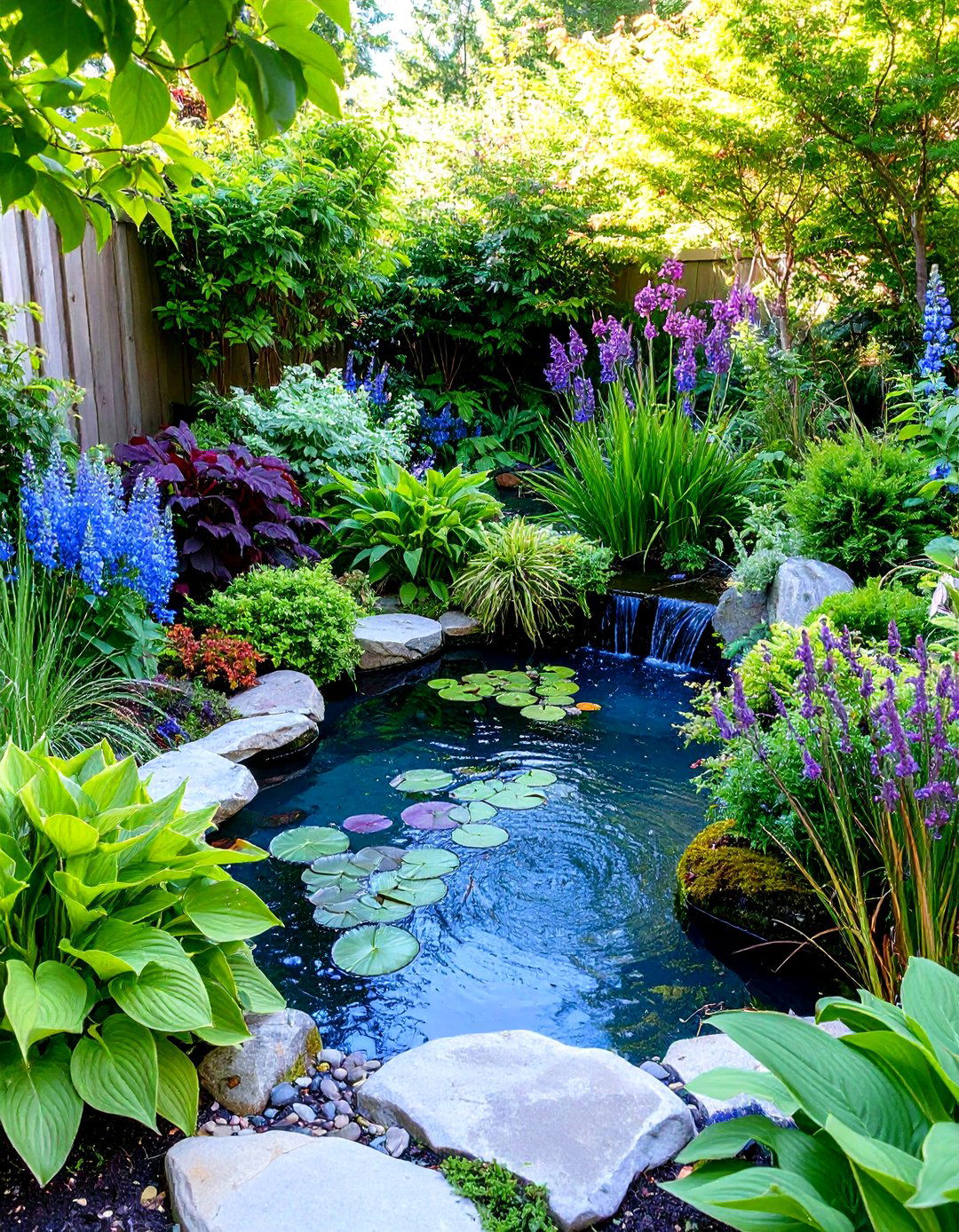
Employing a cool color palette of greens, blues, and purples in shade garden plantings evokes a refreshing atmosphere and visually counteracts summer heat. Rebecca Sweet recommends pairing these hues with water features—such as fountains or reflective ponds—to amplify the perception of coolness and tranquility. Incorporate containers or statuary in azure or turquoise finishes to reinforce the theme and draw the eye to focal water elements. Even simple accents like painted Adirondack chairs in cool tones or ambient lighting near water can enhance sensory appeal in shaded retreats. Together, cool hues and reflective water elements balance the thermal and visual environment, making shade gardens more inviting on hot days.
15. Perennial Powerhouses for Shade Beds
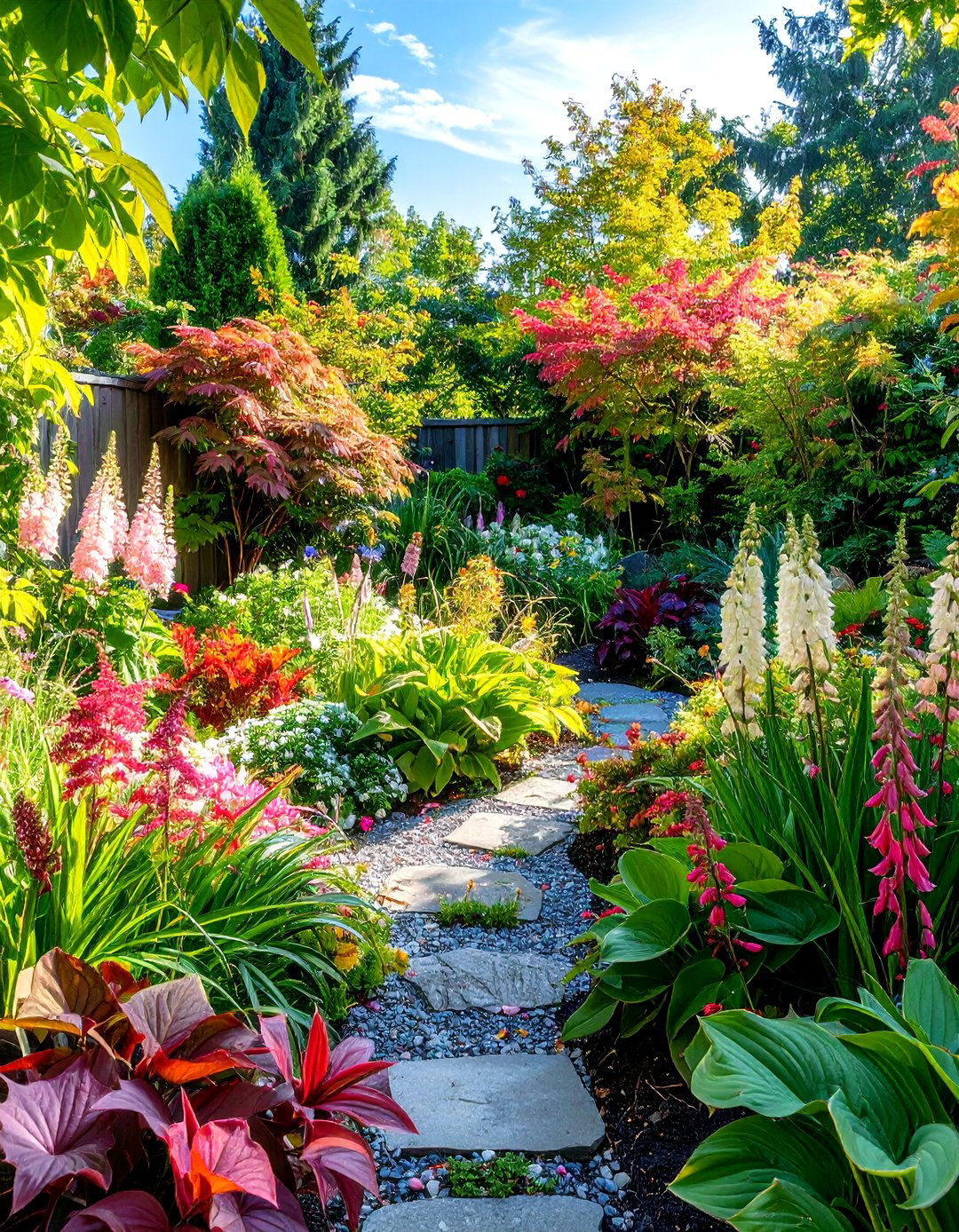
Capitalizing on perennial powerhouses transforms shade gardens into vibrant displays with minimal replanting demands. Southern Living’s top shade perennials include astilbe for feathery blooms, bleeding heart for heart-shaped flowers, and hellebores for early spring color. Variegated caladium, coral bells (Heuchera), and hostas offer striking foliage contrast and textural variety throughout the growing season. For late-season interest, foxglove (Digitalis) and toad lily (Tricyrtis) provide unexpected blooms in deep shade. Integrating a mix of these low-maintenance perennials ensures layered seasonal interest and year-round garden structure under canopy cover.
16. Container Gardens for Small Shaded Spaces
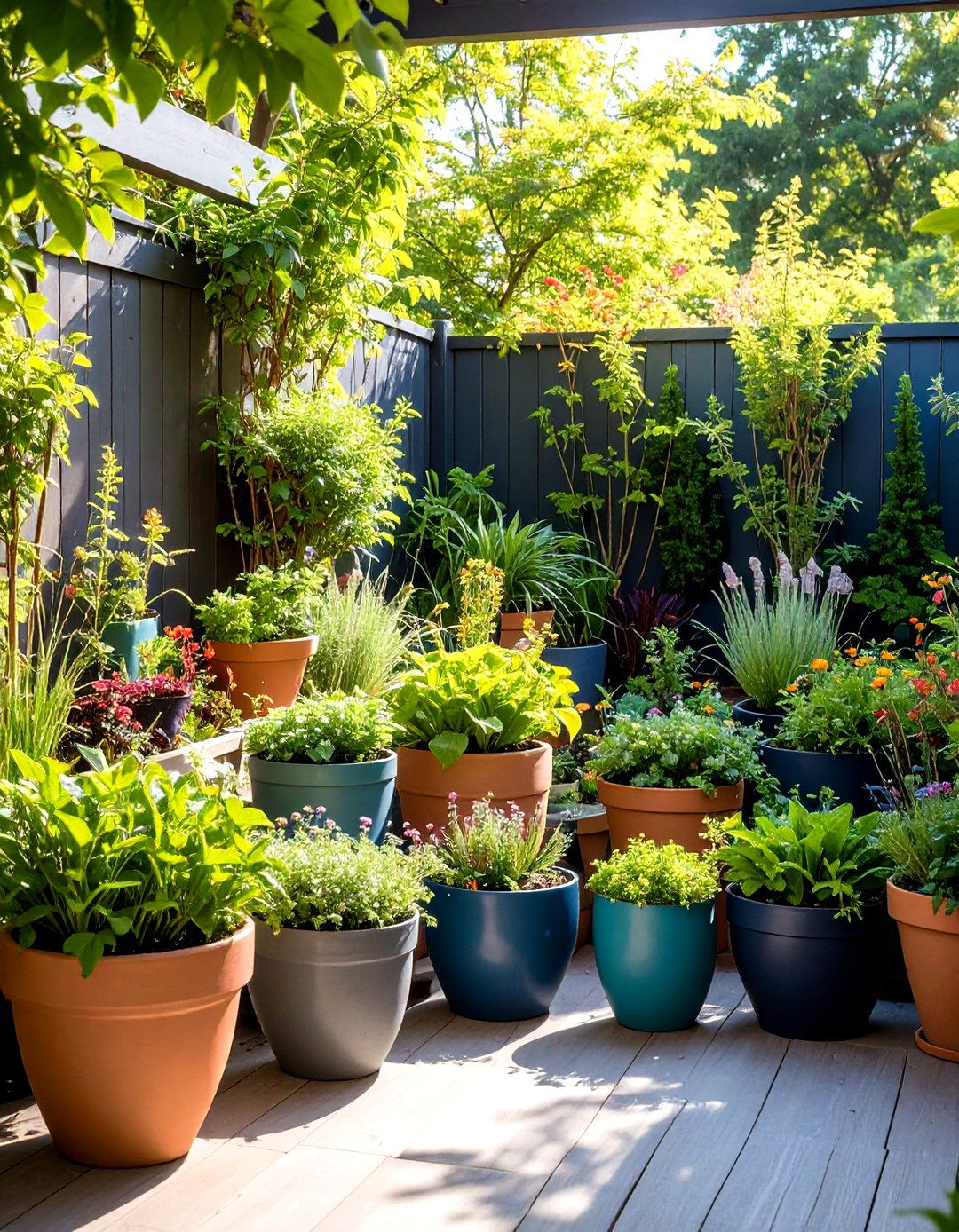
Container gardens enable vibrant plantings in confined or deep shade spaces such as courtyards or under stoops. Shaded containers retain moisture longer and avoid root competition, allowing gardeners to experiment with a wide range of species. Grouping pots at varying heights creates a layered effect, drawing the eye upward in narrow passages and maximizing visual impact. Selecting pots with unique textures and colors, such as matte ceramic or aged metal, can brighten dim corners and complement plant foliage. By mixing container sizes and materials, gardeners craft cohesive, portable shade displays tailored to small-footprint landscapes.
17. Tropical-Inspired Shade Retreat
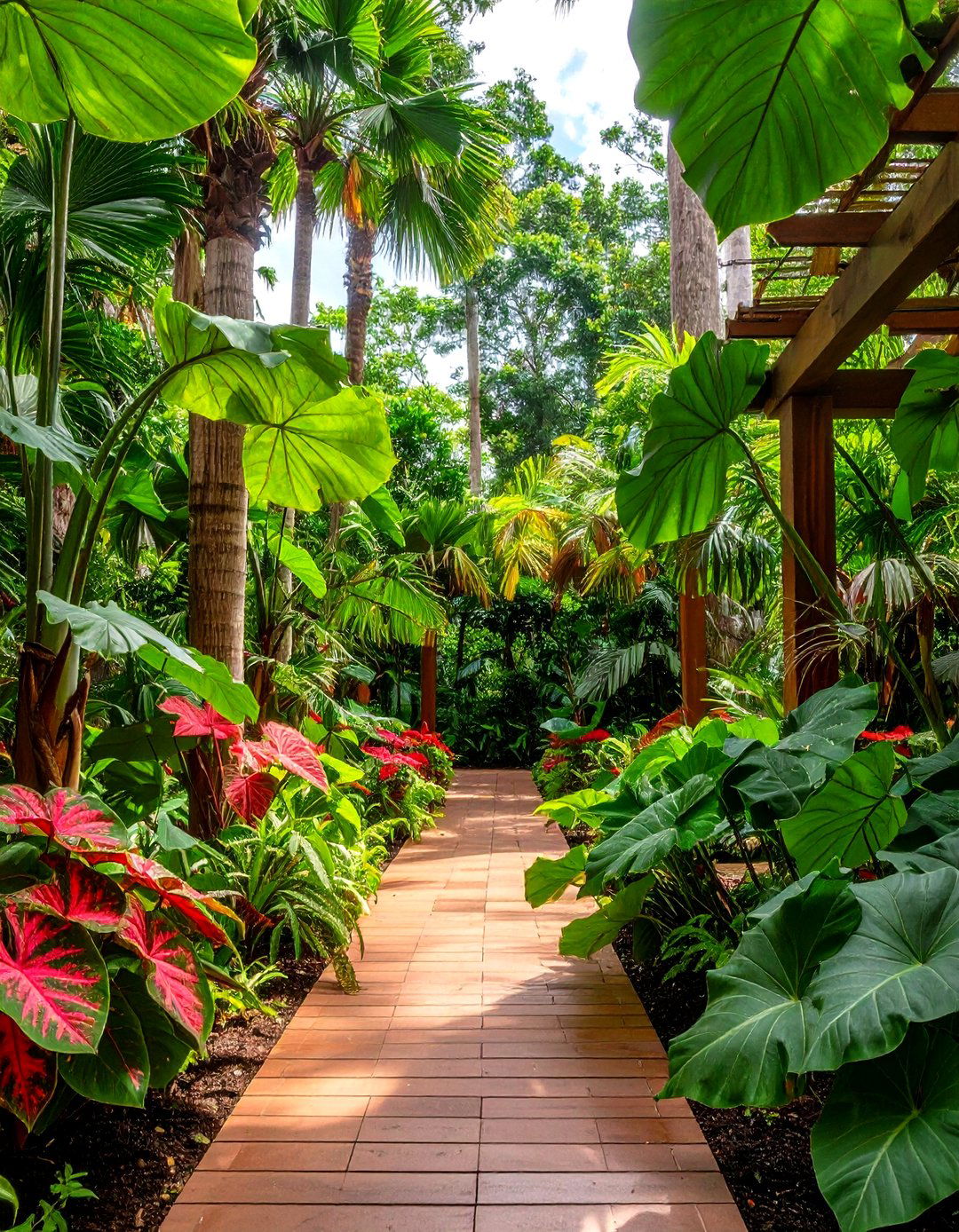
Tropical-inspired shade retreats transport gardeners to breezy paradises by incorporating lush, oversized foliage such as caladiums and elephant ears. Caladium varieties with vibrant red, pink, or chartreuse leaves thrive in warm, humid conditions and provide dramatic color accents beneath tree canopies. Elephant ear species like Colocasia or Alocasia contribute bold, architectural form and flourish in consistently moist, rich soils within deep shade settings. Pair these statement plants with ferns and ornamental grasses to soften edges and introduce textural contrast reminiscent of tropical understories. This lush palette evokes exotic escapes, creating immersive shade sanctuaries with minimal maintenance requirements.
18. Woodland Style Shade Garden with Native Plants

Woodland-style shade gardens evoke forest glades by emphasizing native species that thrive under open canopies and support local wildlife. American Meadows recommends designing side gardens to fill shaded corners with native ferns, trilliums, and wild ginger for naturalistic appeal. Adding flowering currant (Ribes sanguineum), Oregon grape (Mahonia spp.), and salal (Gaultheria shallon) enhances seasonal interest and pollinator support. This habitat-inspired approach enriches biodiversity, providing foraging and shelter for birds and beneficial insects. Mulched pathways and mossy stepping stones complete the woodland feel, guiding exploration through serene, shaded corridors.
19. Japanese-Inspired Shade Sanctuary
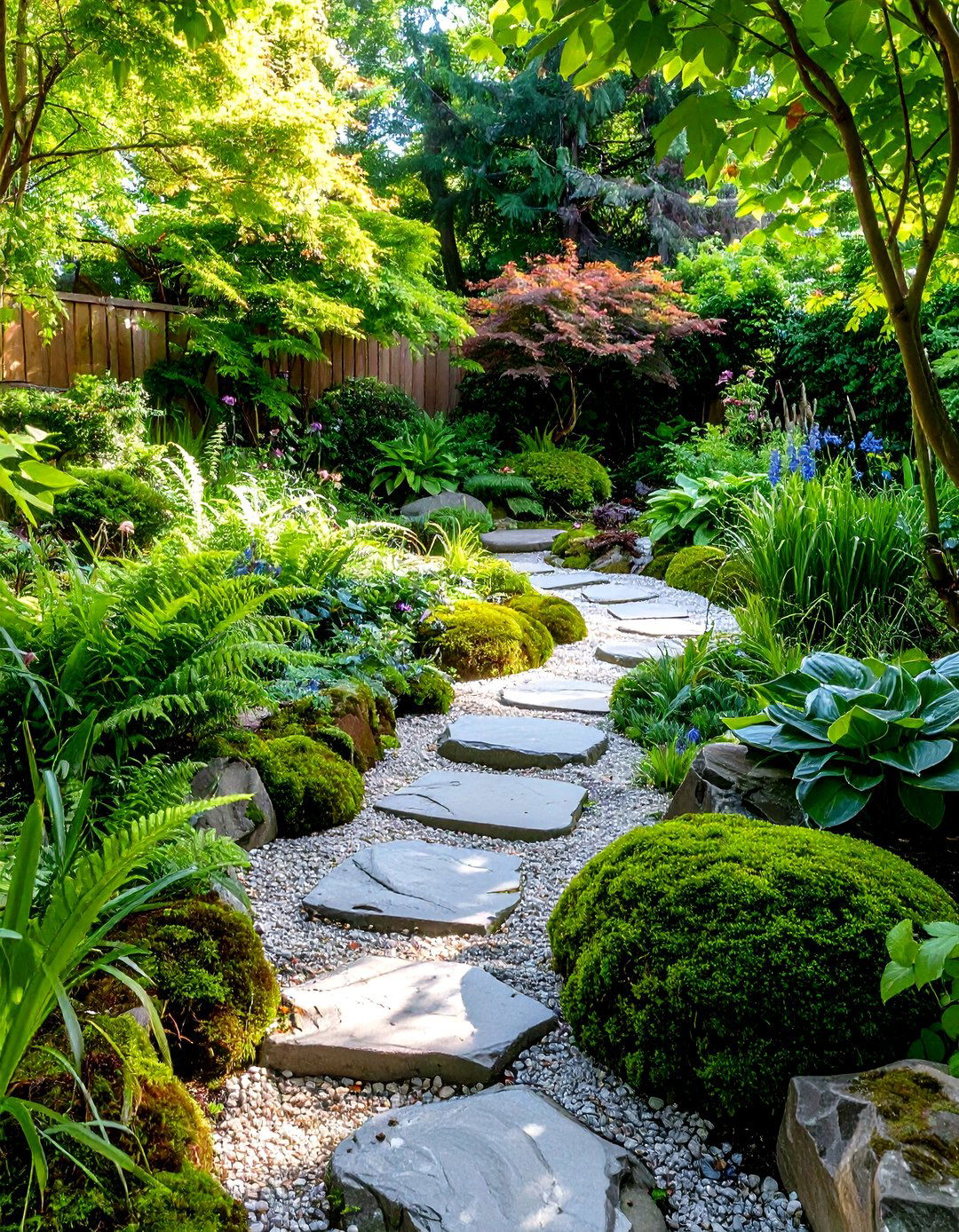
Japanese-inspired shade sanctuaries evoke tranquility through minimalist layouts, clean lines, and a restrained plant palette. Experts advise starting with green textures such as hostas, ferns, and cloud-pruned evergreens like Pieris japonica to craft a serene foundation. Key elements include moss lawns, stone lanterns, and simple stepping stones to emphasize meditation and sensory clarity in low-light spaces. Incorporating water features like small fountains or reflecting basins enhances auditory and visual calm in these intimate garden rooms. Using void spaces or open gravel pockets further reinforces the Japanese principle of “less is more”, ensuring contemplative focus.
20. Islamic-Inspired Quadrilateral Shade Oasis
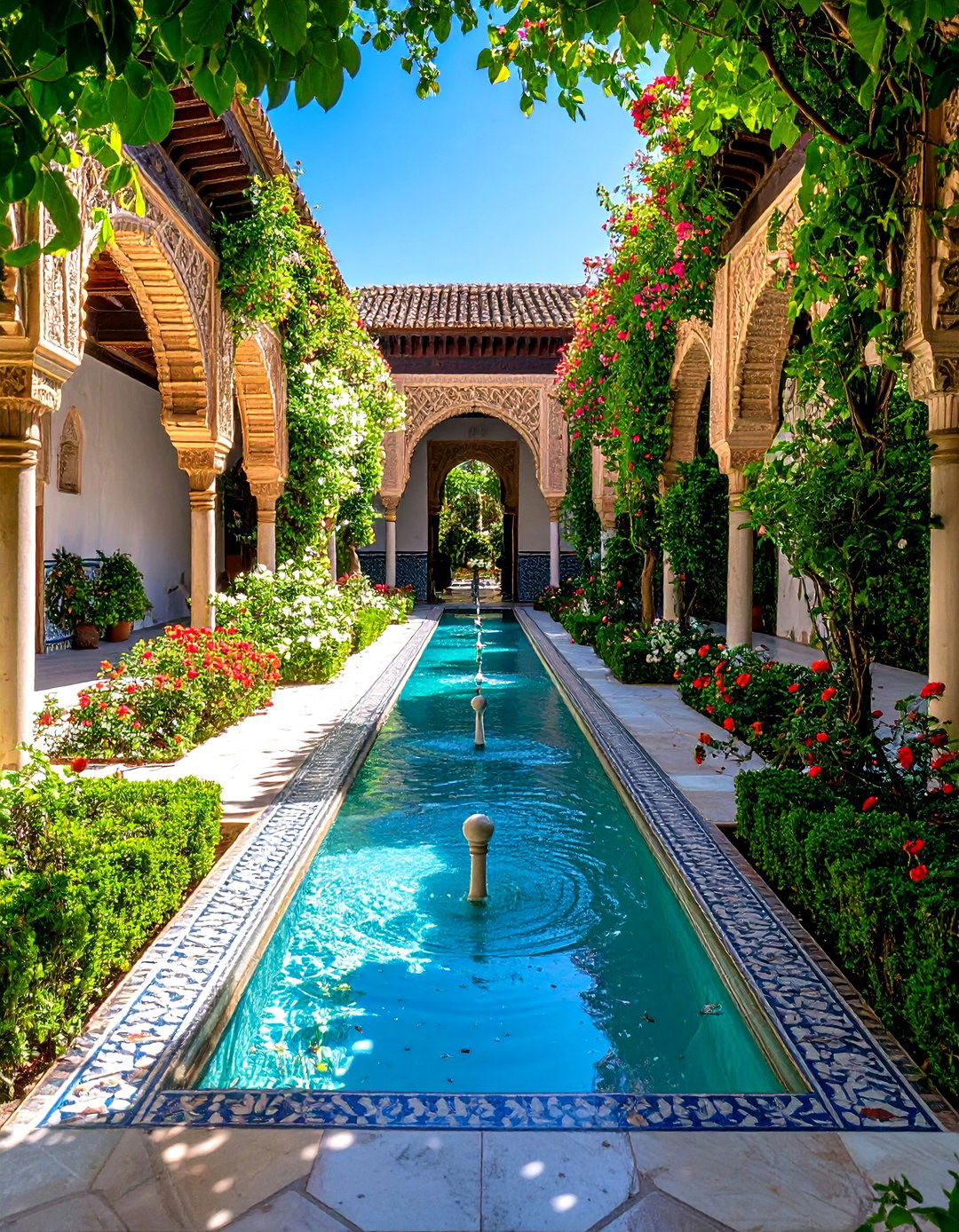
Islamic-inspired shade gardens draw on the charbagh layout, dividing space into quadrants intersected by pathways or water channels. These serene designs emphasize symmetrical geometry, with shaded alcoves providing cool retreats amidst scented citrus or pomegranate trees. Central water features such as fountains or reflecting pools cool the air and offer gentle auditory relief in arid climates. Architectural elements like arcades, pergolas, and trellises support climbing jasmine and grapevines, weaving shade and fragrance throughout the garden. Integrating aromatic plants such as roses, citrus, and herbs under layered canopy channels divine symbolism and human comfort in a cohesive Shade Oasis.
Conclusion:
Creating a compelling shade garden requires thoughtful site analysis, matching plant selections to light conditions and anticipating seasonal shifts in canopy cover to ensure long-term vitality. Incorporating layered plantings, strategic lighting, hardscape accents, and artistic principles of design enriches low-light landscapes with depth, interest, and functional outdoor rooms. Whether planting tropical foliage specimens, woodland natives, vibrant perennials, or crafting minimalist Japanese or Islamic-inspired retreats, aligning design with theme fosters cohesion and sensory delight. Container and groundcover approaches offer flexible solutions for small or challenging shaded areas, maximizing visual impact while reducing maintenance demands. By blending creativity with expert-backed guidelines and sustainable plant choices, gardeners can transform any shady spot into a thriving, inspiring sanctuary to enjoy year-round.


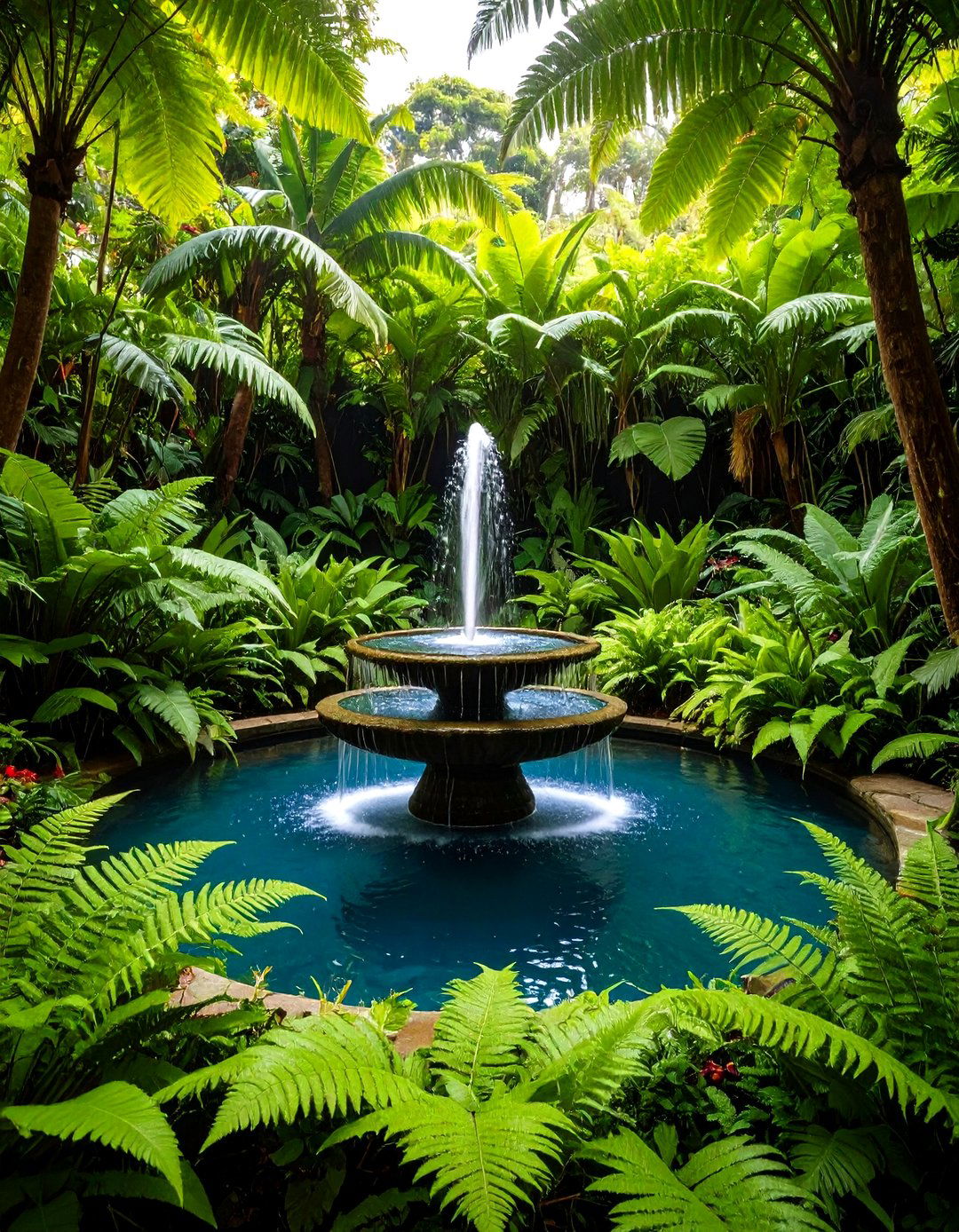
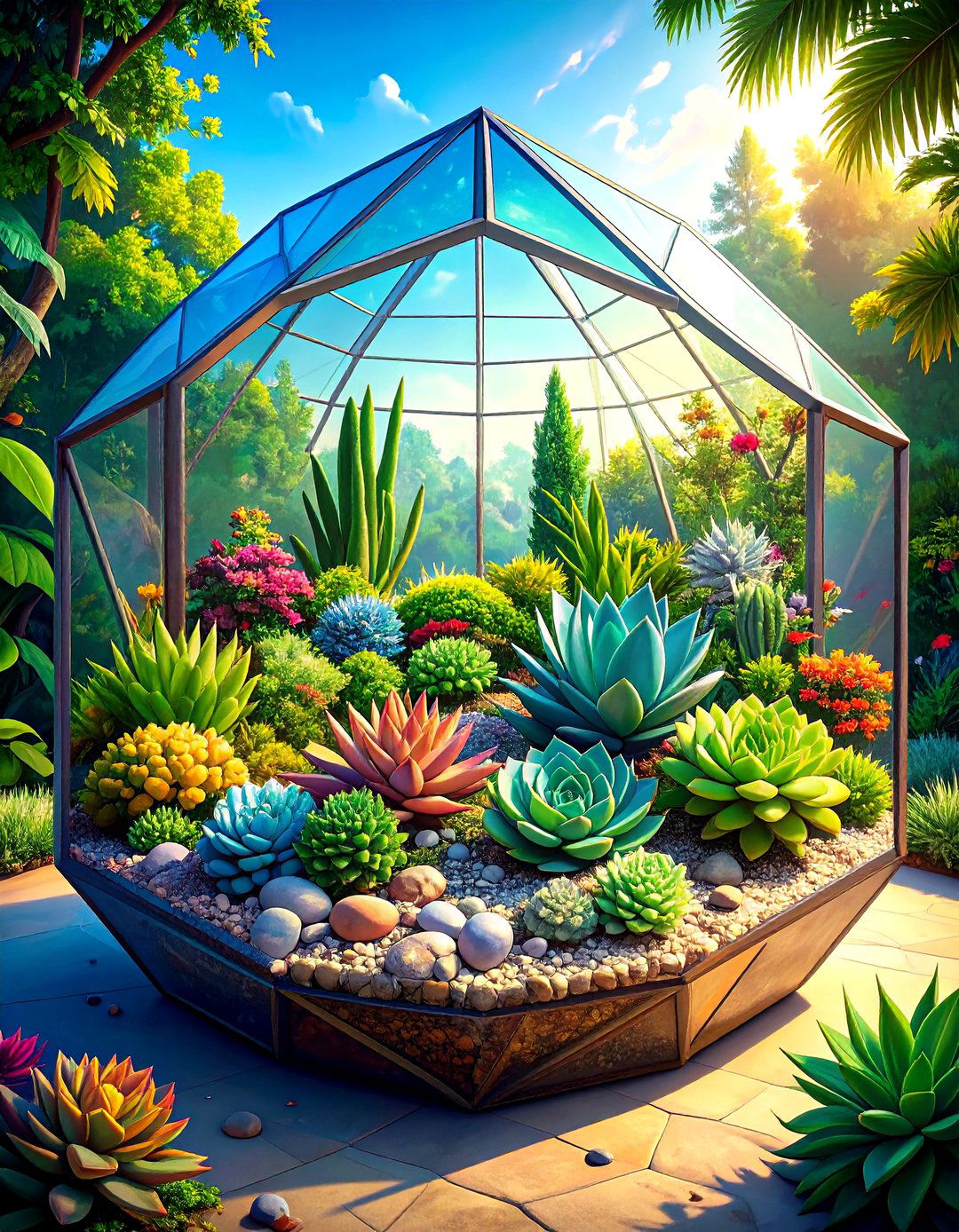
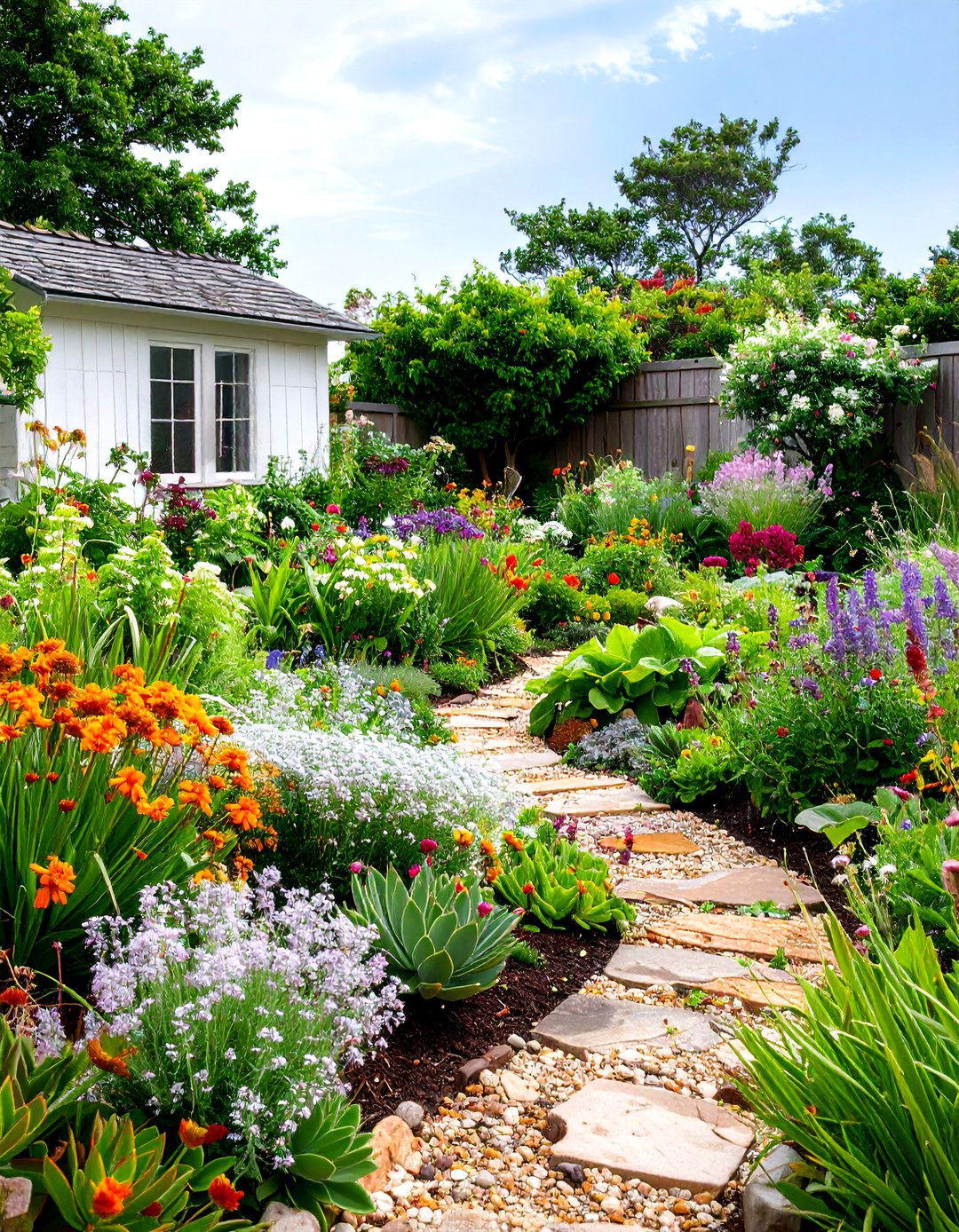



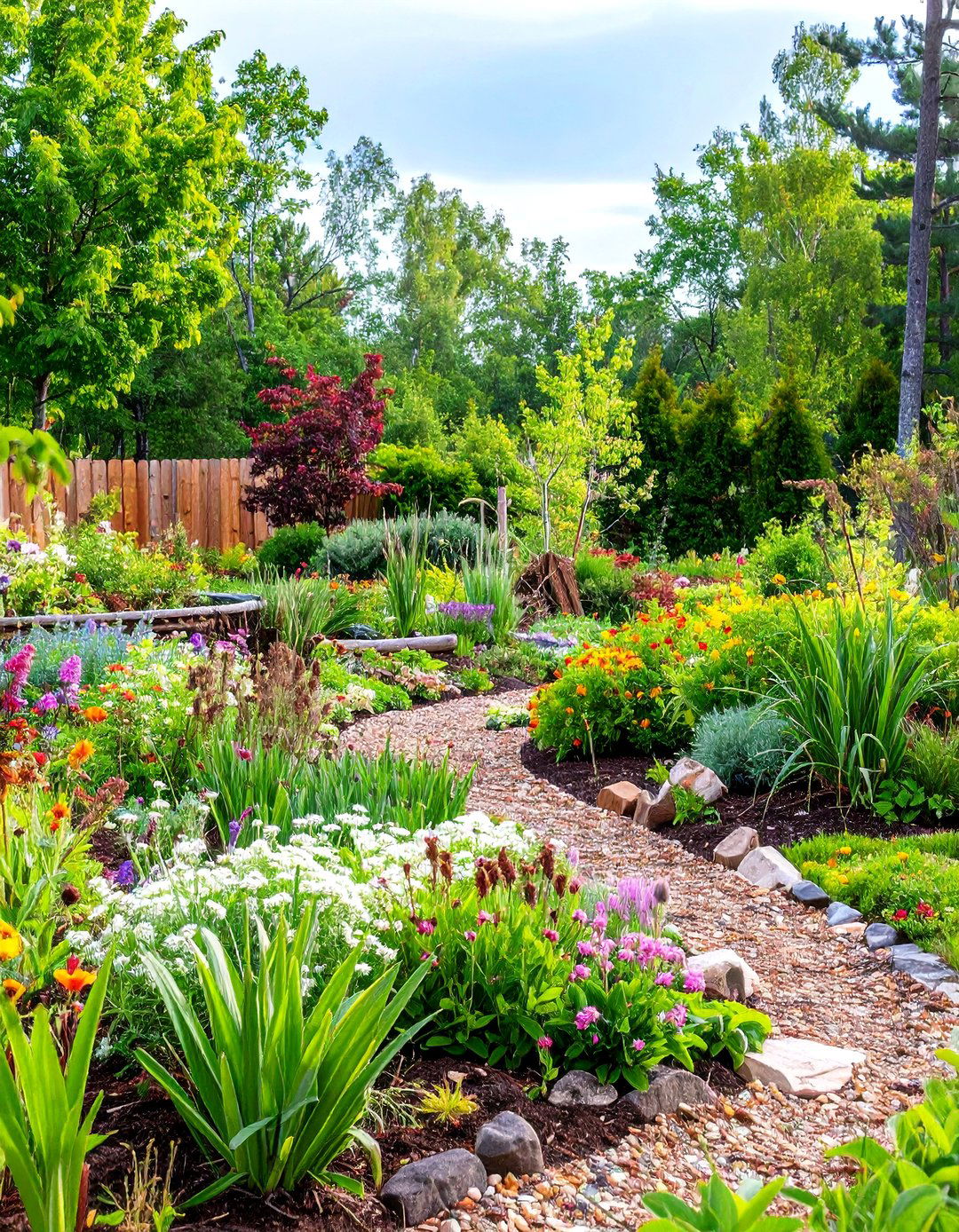
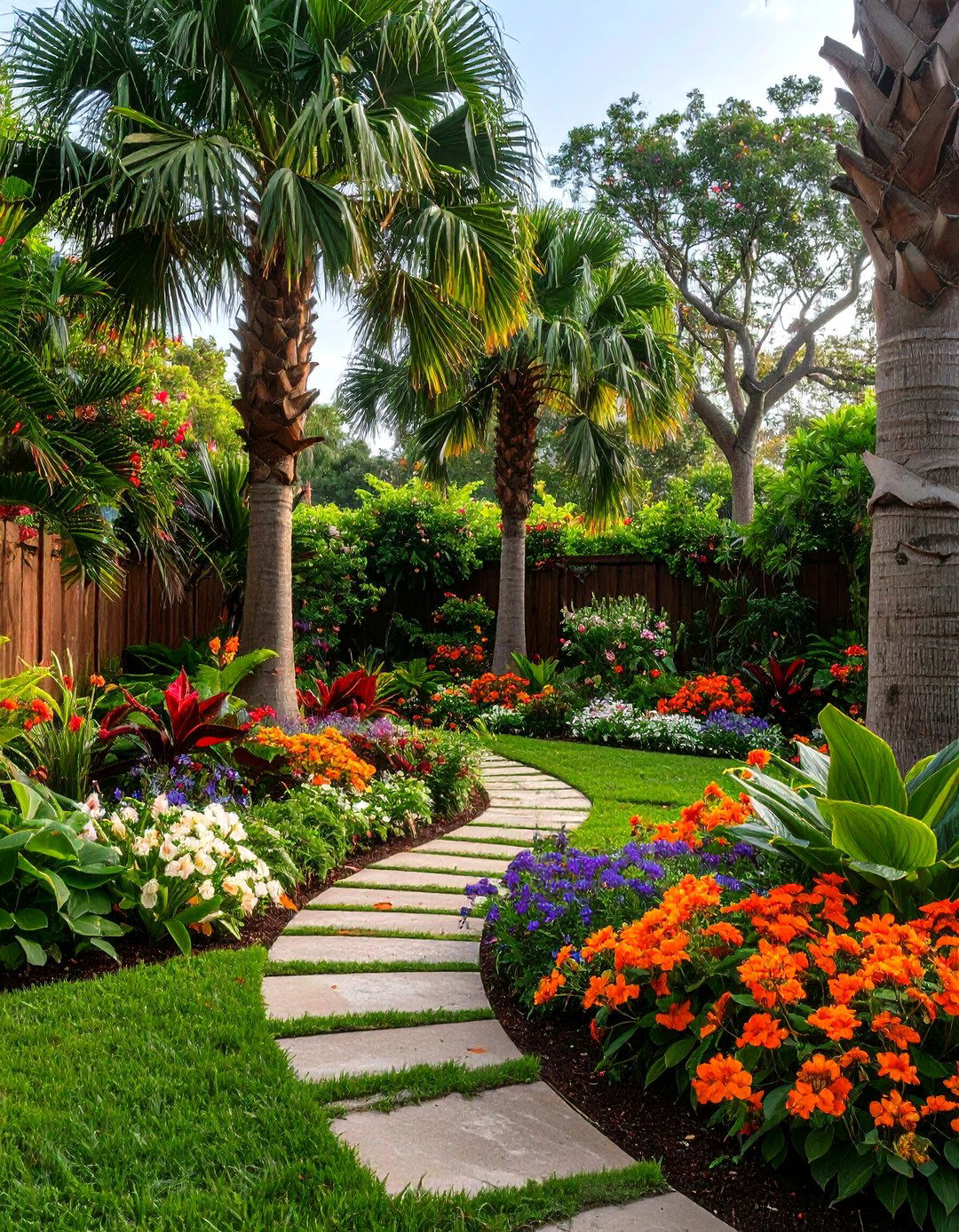
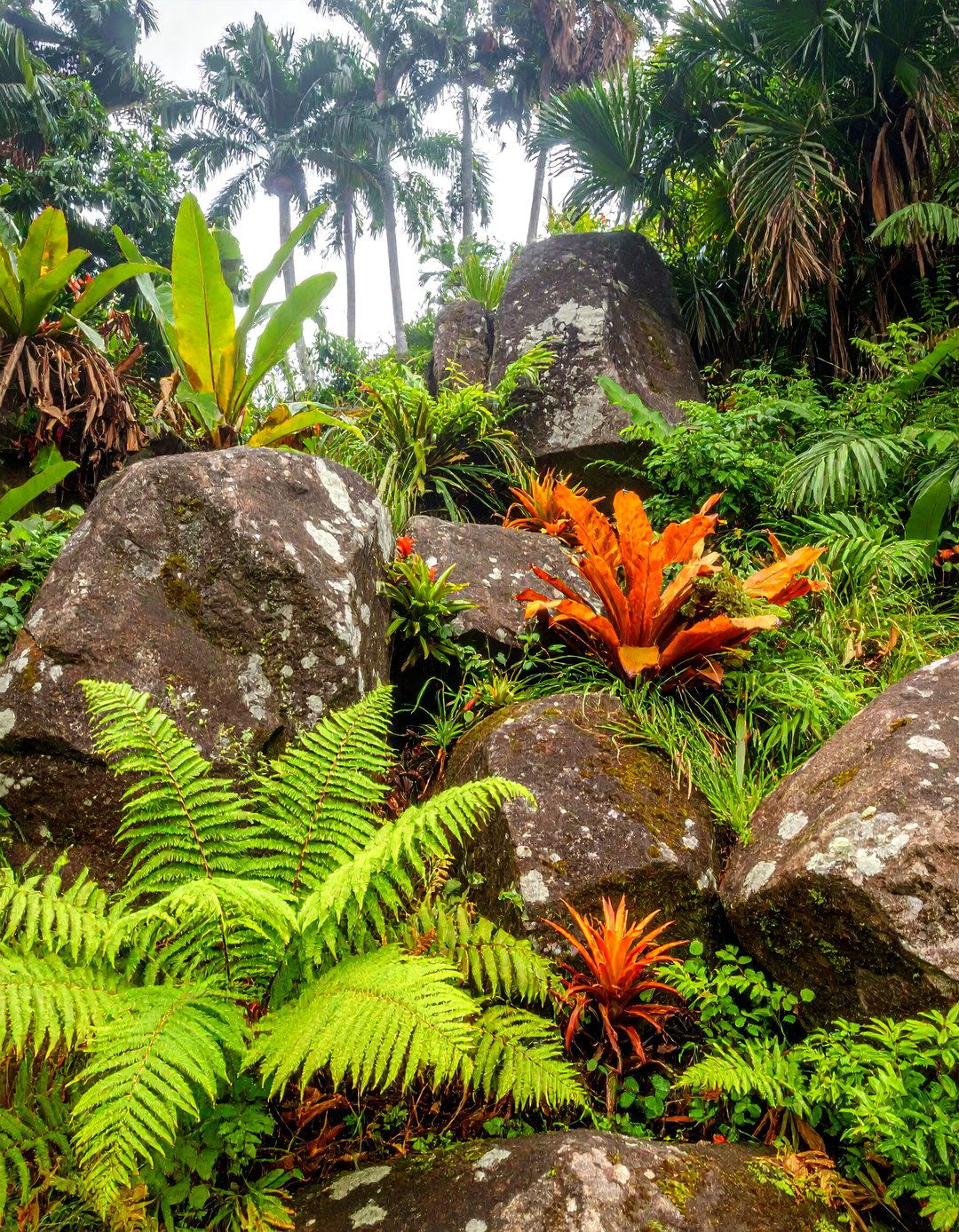
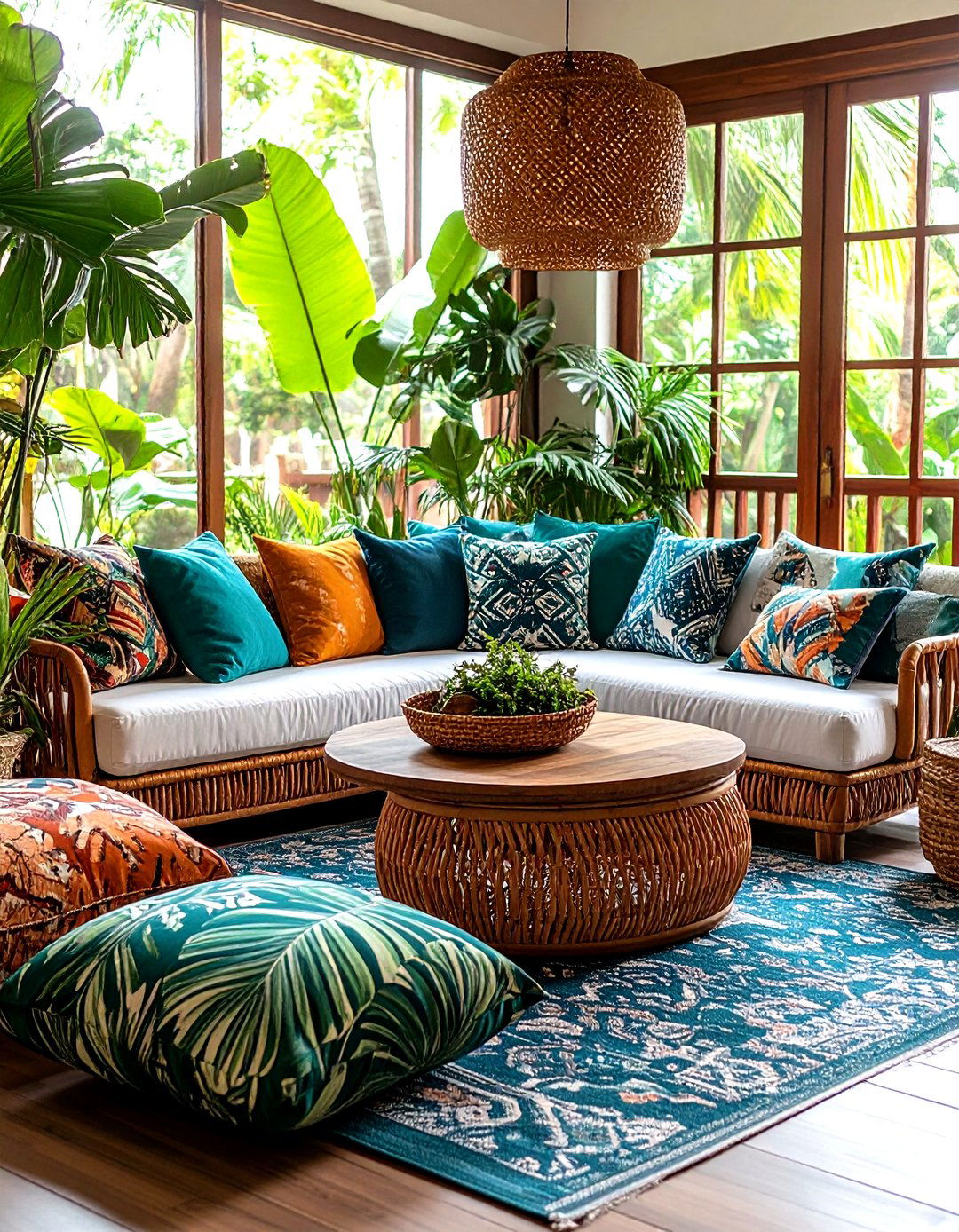

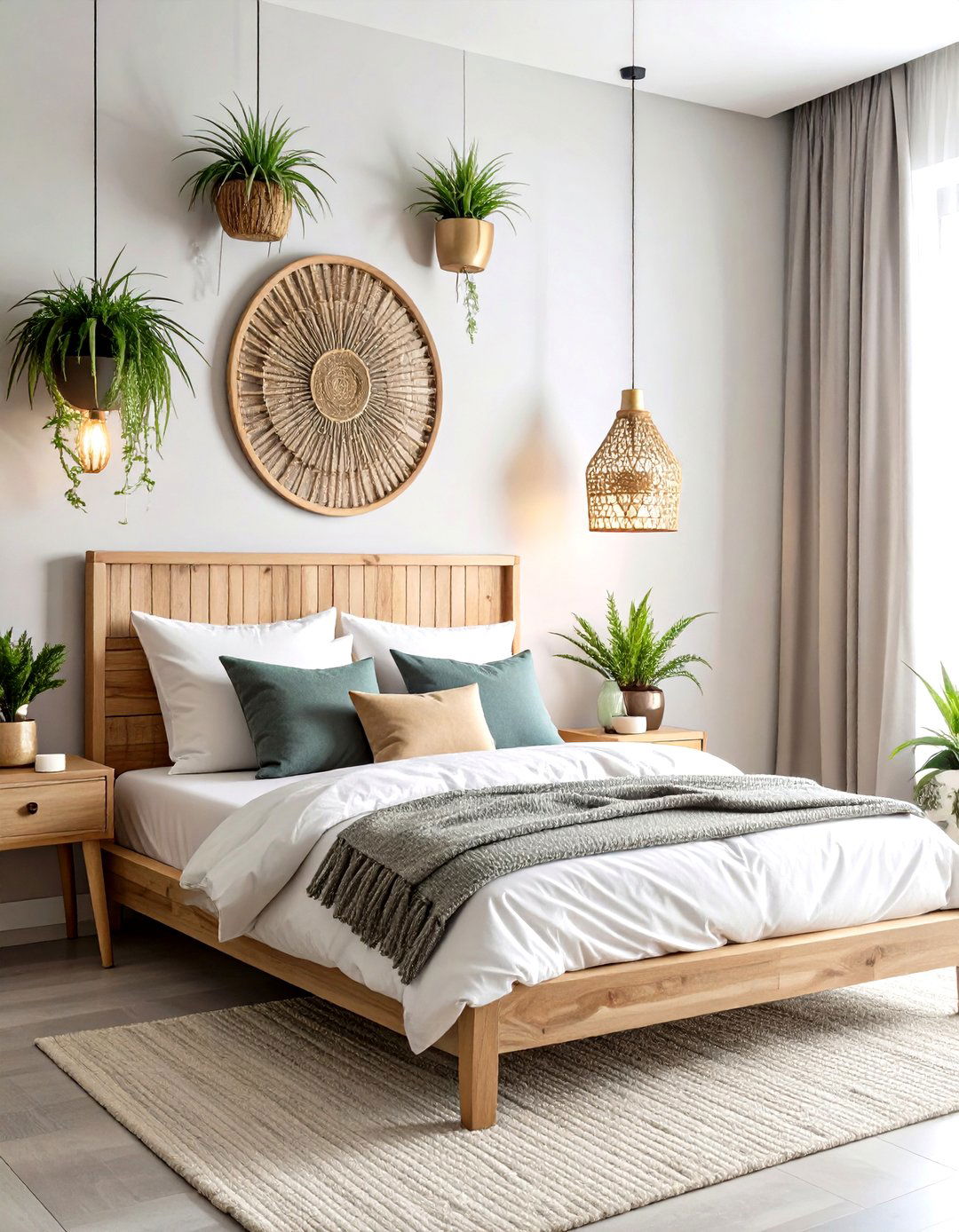



Leave a Reply